
 |
Updated: 2023.12.22![]()
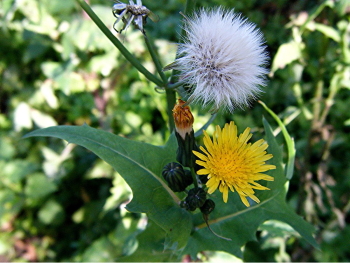 |
מָרוֹר |
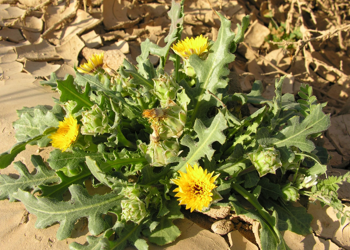 |
Mi•shᵊn•ãhꞋ Ta•lᵊmūdꞋ lists 5 varieties of מָרוֹר, while the accompanying Aramaic & Hebrew Gᵊmãr•ãꞋ elucidates more contemporary interpretations of each variety.![]()
Ultra-Orthodox rabbis of Christian-era, Dark Ages Europe syncretized (assimilated into Ta•lᵊmudꞋ) local European traditions, producing new, reformed redefinitions of מָרוֹר, including mistranslating חֲזֶרֶת as European horseradish, which—like the ët•rōgꞋ—didn't even exist in the flora of Biblical Yi•sᵊr•ã•eilꞋ!
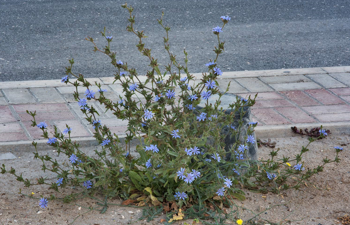 |
Eastern Aramaic Gᵊmãr•ãꞋ to Ta•lᵊmūdꞋ Bã•vᵊl•iꞋ, Ma•sëkꞋët Pᵊsãkh•imꞋ 39a listed 5 varieties of מָרוֹר; the 5th being מָרוֹר itself. Since most rabbis hold that these are listed in order of diminishing efficacy, it's oxymoronic that they hold מָרוֹר to be the least satisfactory variety of מָרוֹר!
Although Mã•rōrꞋ is rigidly stipulated, the dip for the Mã•rōrꞋ was any (kã•shærꞋ) customary household dip—from a garlic sauce to a relish sauce, to a hot chili sauce to chopped garden veggies & pickles and any combination of these as you prefer. Preferably, each participant at the SæꞋdër should be able to garnish the Mã•rōrꞋ in their Hi•lælꞋ with their favorite (kã•shærꞋ) veggie dip; from khūmꞋūs to garlic, onion, pickles and/or hot chili peppers, to salsa or BBQ sauce—as long as Mã•rōrꞋ remains prominent.
While the earliest traditional Jewish Mi•tᵊbãlꞋ (dip) associated with Mã•rōrꞋ today is the Tei•mãn•iꞋ DūkꞋã (European kha•rōꞋsët is far more recent), the BCE 1st century "כּוֹרֵךְ הִלֵּל" (Hi•lælꞋ Sandwich—or just a "Hi•lælꞋ", cited in Ta•lᵊmūdꞋ Bã•vᵊl•iꞋ Ma•sëkꞋët Pᵊsãkh•imꞋ 115a (קטו) and Ma•sëkꞋët Zᵊvãkh•imꞋ 79a (עט); Arabized, a millennium later, to شاورما (Shwarma).
The earliest extant ms.—the "Leiden (Netherlands) ms."—reflects European Ash•kᵊnazꞋim, Ultra-Orthodox Rabbinic interpretations—which incorporate their assimilations & reforms up until 1289 CE! 13th CE European Ash•kᵊnazꞋim—Ultra-Orthodox Rabbinic "Judaism" is not equivalent to the Tōr•ãhꞋ Principles conveyed by Mōsh•ëhꞋ Bën-AmᵊrãmꞋ, not in Europe but at Har Sin•aiꞋ, more than 23 centuries earlier in c. BCE !
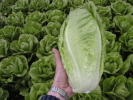 |
 near Deir-El-Medina 0350x250.png) |
Romaine lettuce was not only well-known and plentiful in ancient Mediterranean countries, it was believed to be the favorite food of the Egyptian fertility (sex) god, Min and the most popular and desired food of ancient Mi•tzᵊr•ayꞋim: believed to be the divine aphrodisiac. Depictions of Romaine lettuce (Lactuca sativa longifolia) garnish a number of Egyptian wall paintings.
חֲזֶרֶת — Romaine lettuce (Lactuca sativa longifolia)
It wasn't until the 5th century CE Ta•lᵊmūdꞋ Bã•vᵊl•iꞋ, that חֲזֶרֶת morphed to "horseradish", enabling Aramaic חַסָּא and Hebrew חַסָּה to morph from their original theme of caring-refuge to "lettuce". This was closely emulated by the Christian Syriac ܚܣܐ .—which focused on the connotation of "mercy", acquiring the meaning of "the Mercy Seat" (properly Ka•pōrꞋët—which had also become corrupted into LXX ἱλαστηρίον and/or the Vulgate propitiatorio![]()
![]() — "Mercy Seat").
— "Mercy Seat").
 |
Note: Daucus gingidium is a cousin of Queen Anne's Lace (which is another variety of wild carrot), as well as poisonous cousins: poison hemlock, fool’s parsley and water hemlocks.![]()
Ta•lᵊmūdꞋ Yᵊrū•sha•lᵊm•iꞋ Ma•sëkꞋët Pᵊsãkh•imꞋ 2.5 (18a) identifies תַמְכָא with the Hebrew transliteration גִּנְגִּידִין,![]() correlating to the Greek γῐγγῐ́δῐον, which, according to a painting of a plant by Dioscorides,
correlating to the Greek γῐγγῐ́δῐον, which, according to a painting of a plant by Dioscorides,![]() closely resembles (Daucus gingidium) the wild carrot or parsnip of the ancient Levant. These carrot or parsnip root tubers could be the basis for Medieval European Ultra-Orthodox rabbis adopting horseradish—though why they adopted horseradish as חֲזֶרֶת rather than תַמְכָא detracts from such reasoning.
closely resembles (Daucus gingidium) the wild carrot or parsnip of the ancient Levant. These carrot or parsnip root tubers could be the basis for Medieval European Ultra-Orthodox rabbis adopting horseradish—though why they adopted horseradish as חֲזֶרֶת rather than תַמְכָא detracts from such reasoning.
The uncertainty of identification, compounded by the danger of some of the poisonous varieties of תַמְכָא, combine with the Tōr•ãhꞋ Principle of pi•quꞋakh nëphꞋësh to leave such decisions to botanical experts—which I'm not. (Nor am I aware of the reliability of the illustrative photo identification, or the photographer's botanical qualifications.) My advice: skip תַמְכָא and include, instead, from one or a combination of the other 4 alternatives.
 1st leaves not dissected 0140x100.jpg) |
 bluish plant flower shoot 120x100.jpg) |
 blue flowers 069x100.jpg) |
Fellow Eryngium species, foetidum, doesn't grow in either Sin•aiꞋ nor Yi•sᵊr•ã•eilꞋ. Therefore, although being closely associated culinarily with cousin species Coriandrum sativum (below), E. foetidum cannot have been a kind of ancient mã•rōrꞋ.![]()
 pot 100x100.jpg) |
A cousin species is Apiaceae![]() Coriandrum sativum — Cilantro
Coriandrum sativum — Cilantro![]() (MH:
(MH:![]() כֻּסְבָּרָה), which is the major ingredient in an ancient Israeli (Tei•mãn•imꞋ) dip — skhūg!
כֻּסְבָּרָה), which is the major ingredient in an ancient Israeli (Tei•mãn•imꞋ) dip — skhūg!
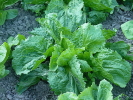 |
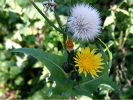 |
Pay it forward (Quote & Cite):
| Yirmeyahu Ben-David. Maror (2023.12.22). Netzarim Jews Worldwide (Ra'anana, Israel). https://www.netzarim.co.il/ (Accessed: MM DD, YYYY). |
 |
 |